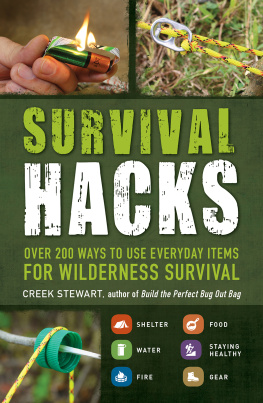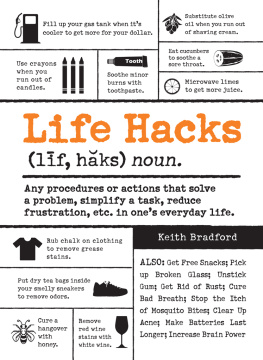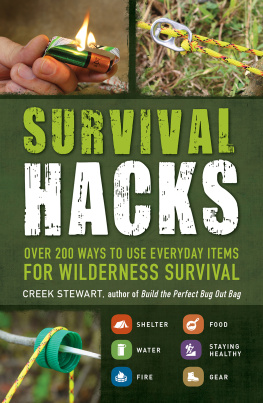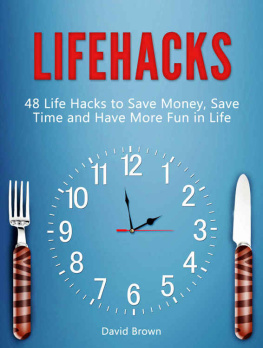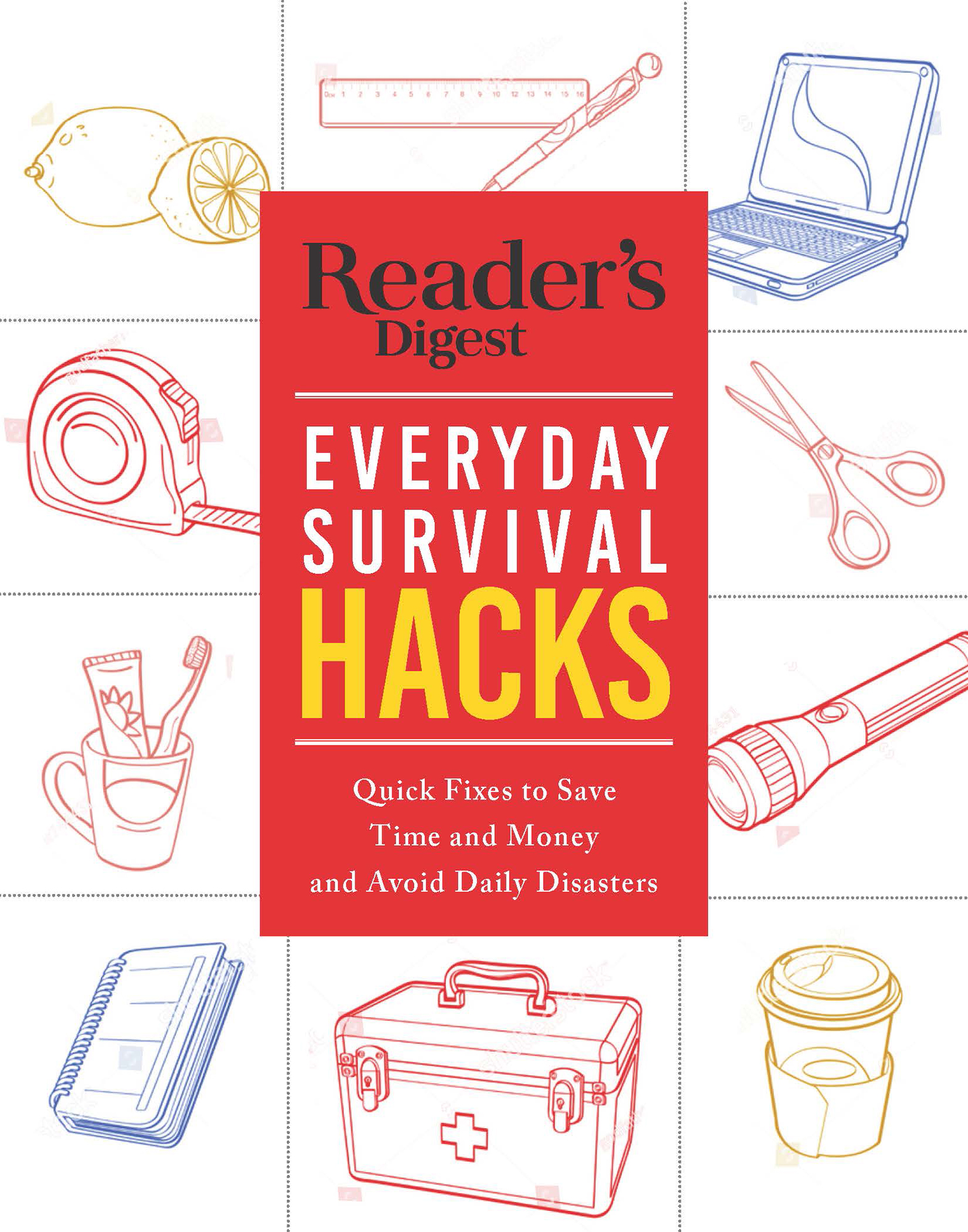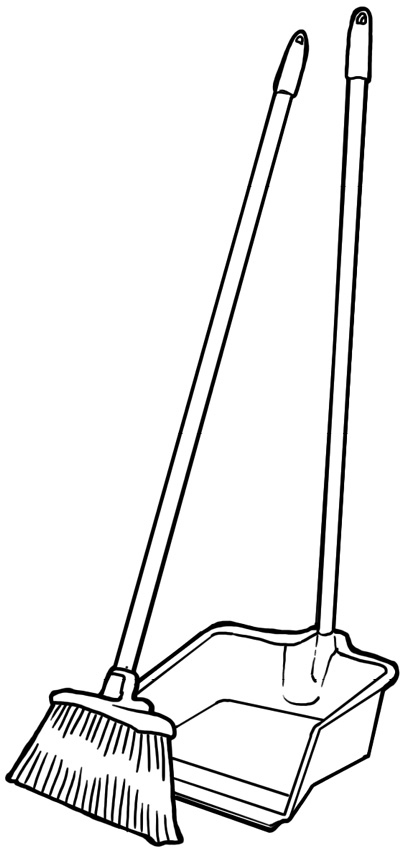Contents
Guide
A READERS DIGEST BOOK
Copyright 2020 Trusted Media Brands, Inc.
All rights reserved. Unauthorized reproduction, in any manner, is prohibited.
Readers Digest is a registered trademark of Trusted Media Brands, Inc.
Cover illustrations by godfather744431/Shutterstock.com
Interior illustrations by Shintayu Layung Sinawang
ISBN 978-1-62145-492-2
ISBN 978-1-62145-493-9 (eBook)
Portions of this book were previously published in Dont Screw It Up! and Avoiding Everyday Disasters.
We are committed to both the quality of our products and the service we provide to our customers. We value your comments, so please feel free to contact us.
Readers Digest Adult Trade Publishing
44 South Broadway
White Plains, NY 10601
For more Readers Digest products and information, visit our website:
www.rd.com (in the United States)
www.readersdigest.ca (in Canada)
NOTES TO OUR READERS
The information in this book should not be substituted for, or used to alter, medical therapy without your doctors advice. For a specific health problem, consult your physician for guidance.
All do-it-yourself activities involve a degree of risk. Skills, materials, tools, and site conditions vary widely. Although the editors have made every effort to ensure accuracy, the reader remains responsible for the selection and use of tools, materials, and methods. Always obey local codes and laws, follow manufacturers operating instructions, and observe safety precautions.
Readers Digest publishes the advice of expert authorities in many fields. But the use of a book is not a substitute for legal, accounting, or other professional services. Consult a competent professional for answers to your specific questions. This publication is sold with the understanding that the contributors and the publisher are not engaged in rendering legal advice. Laws vary from state to state, and readers with specific issues should seek the services of an attorney.
Products or active ingredients, treatments, and the names of organizations that appear in this publication are included for informational purposes only; the inclusion of commercial products in the book does not imply endorsement by Readers Digest, nor does the omission of any product or active ingredient or treatment advice indicate disapproval by Readers Digest. When using any commercial product, readers should read and follow all label directions carefully. The publisher and the contributors specifically disclaim any responsibility for any liability, loss, or risk (personal, financial, or otherwise) that may be claimed or incurred as a consequence, directly or indirectly, of the use and/or application of any of the contents of this publication.
TIDYING UP
- Double up on your welcome mats. A nice welcome mat gives guests a place to wipe their feetbut a second mat inside the door will catch a lot of the dirt they knocked loose outside. Be sure to shake the dirt off of welcome mats from time to time; otherwise, youre just giving your guests a place to pick up debris to track around your house!
- Consider adopting a shoes-off policy. Getting into the habit of removing shoes at the door will keep your family from tracking dirt into the house. Keep a pair of slippers for each family member near the door, so you can change from your outdoor to your indoor footwear.
- Choose the broom your floor wants. Brooms for the house come in two basic designs: made with either soft plastic bristles or straw. Straw brooms are best for rough, worn flooring, but they are too harsh for delicate finishes. If your floor is new and (as yet) undamaged, youll want to use a plastic model to keep it that way.
- Sweep thoroughly. Select a broom with an angled head if you need to get under cabinets. Before sweeping, dont forget to turn off any fans or other devices that might blow the dust around the room. Got a little line of dirt that just wont get into the dustpan? Pull out your hand vacuum and suck it up, or use a moistened towel to mop up the dirts last line of defense.
- Strategize your sweep. If your room is square, use the perimeter method. Pick one corner and sweep inward along the walls. Then work around the room, spiraling inward, until you have a neat little pile of dirt in the middle of the room. If your room is more rectangular, start at one end and work toward the other. Youll end up with a series of small dirt piles at the end of each row, which you can combine into one at the very end.
- Absorb household odors with coffee. Keep an open can of ground coffee near the cats litter box, or in the corner of the laundry room. Your nose will thank you!
- Shellac the walls to seal away bad smells. Walls are particularly absorbent of smoke and other odors. If yours are giving you trouble, you can try implementing the technique experts use in buildings that have absorbed smoke from fires. After you seal the walls and ceilings with shellac or a shellac-based primerthis helps lock in the odorthen repaint.
- Charcoal rids a room of paint fumes. Place a few charcoal briquettes in a pan in the center of a newly painted room, and close the door. The smell will be gone soonsometimes within a day!
- Leave the dishwashing to the dishwasher. Dont rinse your dishes before you put them inbesides wasting water, its bad for your dishes. Dishwashing detergent was created to dissolve food, and if its in there without food to dissolve, it will start attacking the dishes and glassware.
- Dont overdo it on dishwashing detergent. Dishwashers use less water than they did in days gone by, and detergents are more concentrated. This means you need less soap. Otherwise, not only are you spending more than you have to on something thats (literally) going down the drainbut also, too much soap leads to cloudy glasses.
- Use vinegar to clean your dishwasher. Are your dishes coming out of the dishwasher with a frosty white film on them? This is a residue of minerals that new phosphate-free detergents can leave behind. Try this mineral-removing trick to get your dishwasher back to normal: Put two cups of white vinegar into a bowl and place it in your dishwashers bottom rack. Run the washer without detergent, with only the bowl of vinegar in it. Once it has completed its cycle, run it a second time (this time completely empty) to remove the leftover vinegar.
- Load your dishwasher outside-in. Place large items at the side and back of the dishwasher. This prevents them from keeping water and detergent from reaching other dishes. The dirtier side of each dish should face toward the center, where itll be more exposed to the spray.
- Know your mildews and donts. One of the most common household stinks is caused by mildew, which thrives in areas with prolonged moisture. If you want to prevent it from growing in your bathroom, get the air circulating when all that post-shower steam is in the air. A dehumidifier or an exhaust fan will do the trick. Also, make sure you hang your damp towels so they arent touching each otherthat way they can dry more quickly and thoroughly.
- Freshen up your towels. Mix equal parts Borax and laundry soap, and pour the mixture into the washing machine with the offensive towels. Start the machine on a regular cycle to let it fill with water, then pause the cycle to let the towels (or clothing or shoes) soak for about twenty minutes before you allow it to resume.


